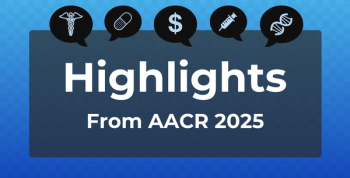
Neighborhood Characteristics Linked to Premature Mortality Rates
The neighborhood you live in not only impacts your health but also can predict if you’ll die prematurely, according to new research published in the journal Health & Place.
The neighborhood you live in not only impacts your health but also can predict if you’ll die prematurely, according to new research published in the journal Health & Place.
The researchers analyzed the 140 neighborhoods that make up Toronto, Ontario, Canada, and identified a link between their environmental, health, socioeconomic, and demographic characteristics and rates of premature mortality.
Stephanie J. Melles, PhD, MSc, assistant professor in the Department of Chemistry and Biology at Ryerson University in Canada, and her coauthor, Luckrezia Awuor, a graduate student in environmental applied science and management, examined:
- 6 environmental variables: ultrafine particles; carcinogenic and noncarcinogenic pollutants; pollution released to air; tree cover; and walkability
- 6 health service indicators: number of health providers; breast, colorectal, and cervical cancer screening rates; student nutrition program uptake rates; and healthy food index
- 8 socioeconomic indicates: total income; Gini coefficient; below age 40; above age 40; proportion of females to males; visible minorities; Indigenous peoples; and education less than grade 9
They found that premature mortality was predicted by the neighborhood’s poor cancer screenings, pollution, lack of tree cover, increased uptake of student nutrition programs, and a high walkability index.
"It's an ongoing concern that neighborhoods with fewer trees, lower uptake rates in cancer screening programs, higher levels of pollution and lower total income levels best predict increased mortality rates," Melles
Essentially, wealthy neighborhoods with greater tree cover and higher rates of cancer screening had lower premature mortality rates. Neighborhoods that tended to be lower income had reduced cancer screening rates, more pollution, and less tree cover. Walkable neighborhoods that were in close proximity to industrial pollution also had higher rates of premature mortality.
There were some surprising, unexplained findings, such as higher-than-average rates of premature mortality in shoreline neighborhoods with good tree cover, extensive green spaces, and no greater pollution than areas with lower mortality rates. They also found that, contrary to previous research, neighborhoods with more traffic-related ultrafine particles and industrial carcinogens and noncarcinogens did not necessarily have higher rates of premature mortality. Larger suburbs with more pollution than downtown neighborhoods actually had a decreased rate of premature mortality, the authors found.
"We need to collect more air quality data to create a more accurate picture of exposure," said Awuor. "We also need more extensive environmental policies for better tree cover and greener spaces. And we need new approaches to promoting cancer screening programs in lower income neighborhoods. These three advances would improve the lifespan of all Toronto residents and, in particular, visible minorities and Indigenous people, who tend to live in the least green and most polluted neighborhoods."
Reference
Awuor L, Melles S. The influence of environmental and health indicators on premature mortality: an empirical analysis of the City of Toronto’s 140 neighborhoods [published online June 25, 2019]. Health Place. doi: 10.1016/j.healthplace.2019.102155.
Newsletter
Stay ahead of policy, cost, and value—subscribe to AJMC for expert insights at the intersection of clinical care and health economics.









































